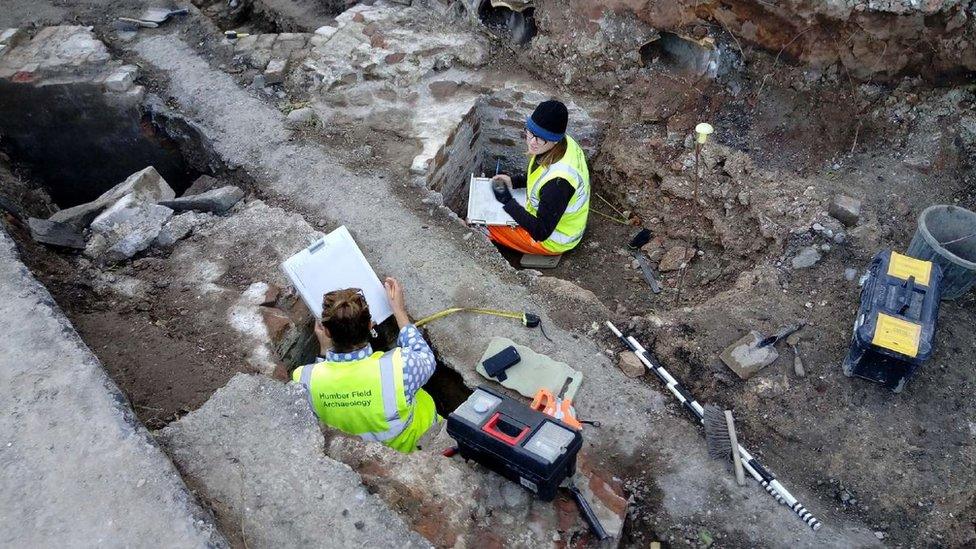When Henry VIII brought the big guns to town
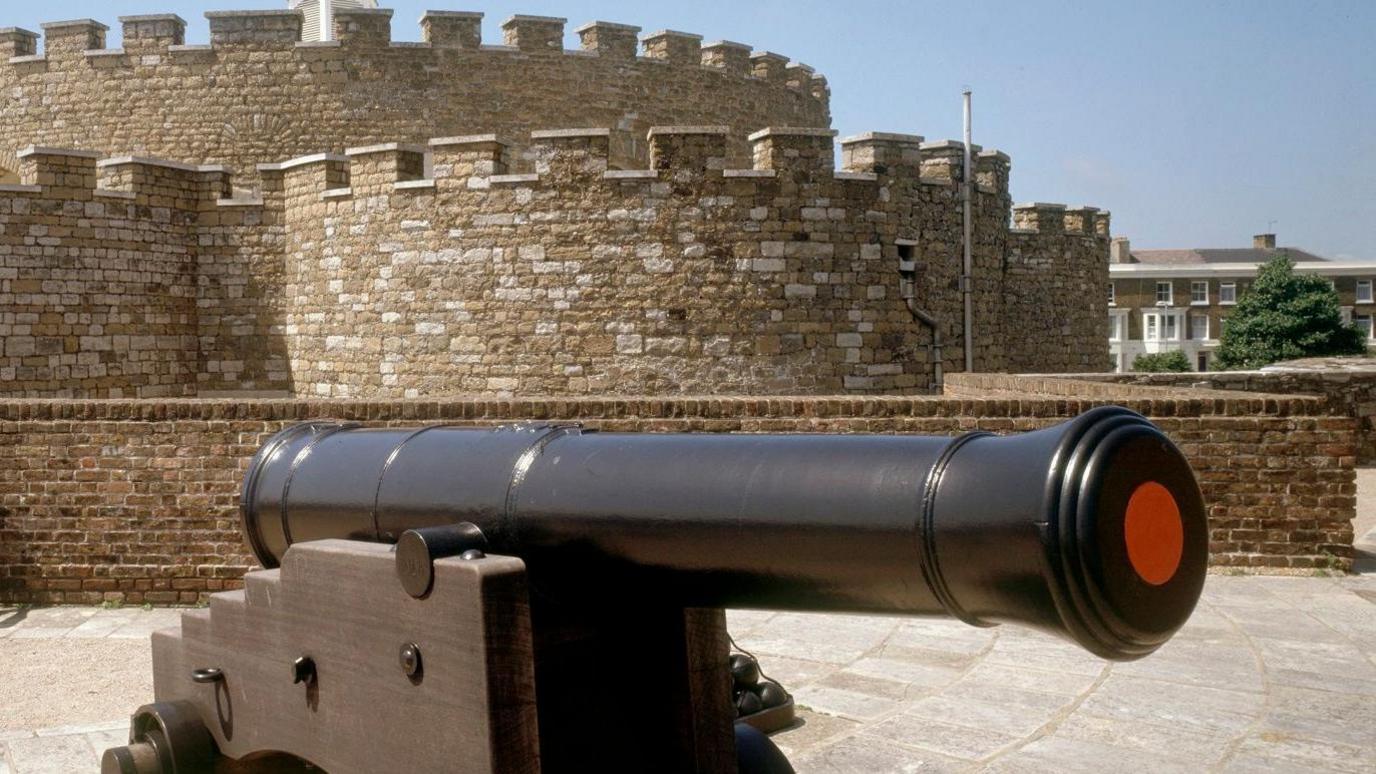
Deal Castle in Kent was built for Henry VIII in 1540. Similar fortifications were constructed in Hull at about the same time
- Published
Today, it is dominated by the bold, modern contours of The Deep aquarium.
But step back almost 500 years, and the mouth of the River Hull was overlooked by a very different sort of structure.
The South Blockhouse – part of a series of castles and fortifications ordered by Henry VIII – had "enormously thick" brick walls and was bristling with cannon.
It was built to protect the port from hostile ships making their way up the Humber and into the harbour.
The ruins of the defences, which were later known as the Citadel, before being torn down in the 19th Century, now lie under a coach park near The Deep.
And the blockhouse has made headlines in recent months due to wrangles over long-running plans to recreate a part of it as a new visitor attraction.
Why did Henry VIII bring the big guns to Hull?
The topic is being explored as part of the Hidden East Yorkshire Podcast.
Last month, planning permission was granted to build wire-mesh structures on the site to give an impression of the scale and shape of the blockhouse.
But doubts remain over the viability of the new attraction because of a shortfall in funding.
So why is the site so important to the history of Hull?
Ken Steedman, a project manager at Humber Field Archaeology, has been investigating the blockhouse for more than 25 years and says the site reinforces Hull's status as an important town during the Tudor era.
"Henry did a lot of his defensive works on the south coast, so this was very much further north than most of the significant other structures.
"He came to Hull on a visit in 1540 and again in 1541. He established that there was a weakness here.
"Hull's medieval walls only surrounded three sides, because the River Hull was the port.
"The only defensive measure they had up to then was a chain across the mouth of the Hull to stop enemy ships coming in."
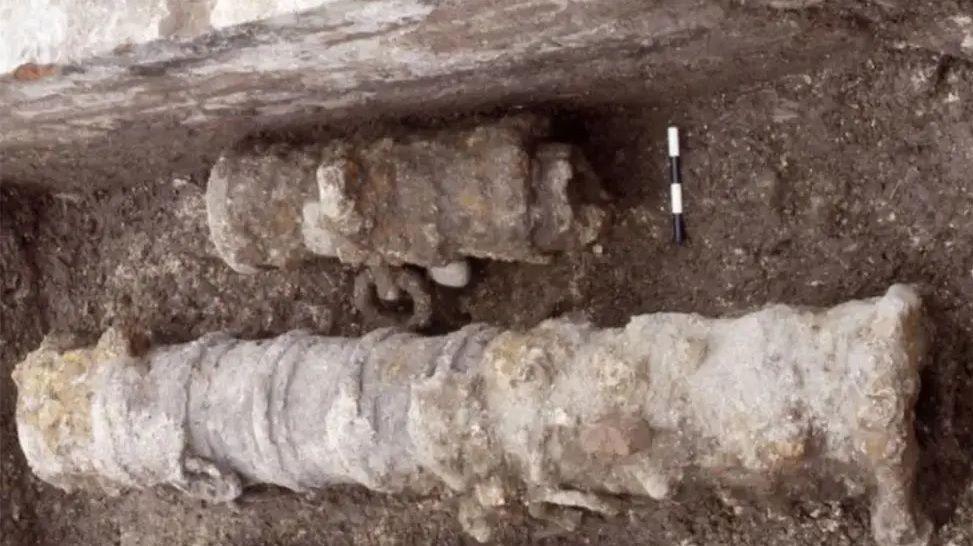
A cannon discovered in the ruins of the blockhouse
Henry ordered the construction of two blockhouses and a large castle in the middle, all built of brick.
Brick kilns established on the site nearby to produce materials, while stone was taken from Meaux Abbey, near Wawne, and shipped down the river, at a time when Henry was forcibly closing monasteries.
It would have been used to build doorways or broken up to form the core of the walls.
The South Blockhouse was formed of three "petalled lobes", shaped like a club playing card, says Ken.
"We're talking about a wall several metres thick, which would have had gun ports in them for cannon to fire through.
"It had two floors and a roof that would have had a cannon on as well.
"What we see now is just the remains of the ground floor. It still has the surviving floors, several feet lower than the top of the walls as they stand.
"The walls were reduced to the current level during the demolition of the Citadel in the 1860s."
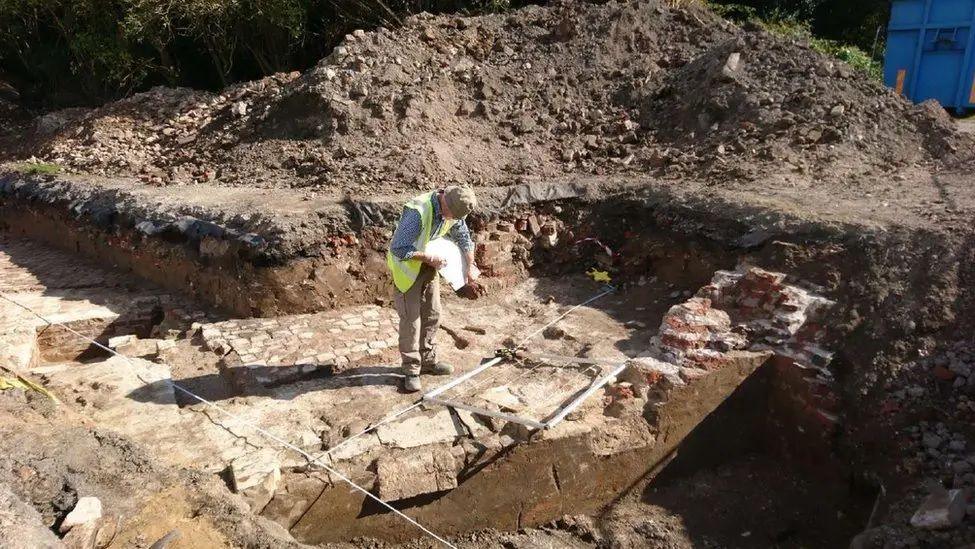
Thick walls lie under a coach park and have been excavated on several occasions
The site was unearthed during a series of digs, beginning in 1997. For Ken, it was a "very exciting" discovery.
"With The Deep being planned and constructed, we knew that the access road would cut across where we thought the blockhouse and some of the Citadel walls would be," he says.
"As part of the proposal we did some trial excavations and we found that the survival of the early structure was incredible."
Protections were put in place to ensure the site did not get built on and during the City of Culture year, the line of the walls was painted on to the car park.
"We had open days and the response from the public was enormous, incredible," he adds.
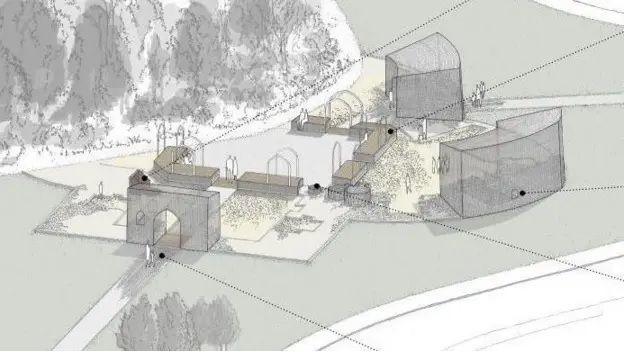
Planning permission has been granted for a visitor attraction on the site, but funding has yet to be secured
That level of interest has been sustained by projects such as When Cannons Were Roaring, a play performed by actors at the Northern Academy of Performing Arts in Hull, who were commissioned to bring to life the story of how Henry commanded the defences to be built.
It is now hoped that a visitor attraction on the site will help educate a new generation of residents and visitors about the history of the city.
Ken says the council is exploring options to find funding.
He adds: "We spend so much of our time online and you can look at three-dimensional representations, but actually being on the site, seeing something connected to the past, is far more effective than reading it in a book or seeing it on a screen."
Listen to more podcasts from the Hidden East Yorkshire series.
Listen to highlights from Hull and East Yorkshire on BBC Sounds, watch the latest episode of Look North or tell us about a story you think we should be covering here, external.
Related topics
- Published6 March
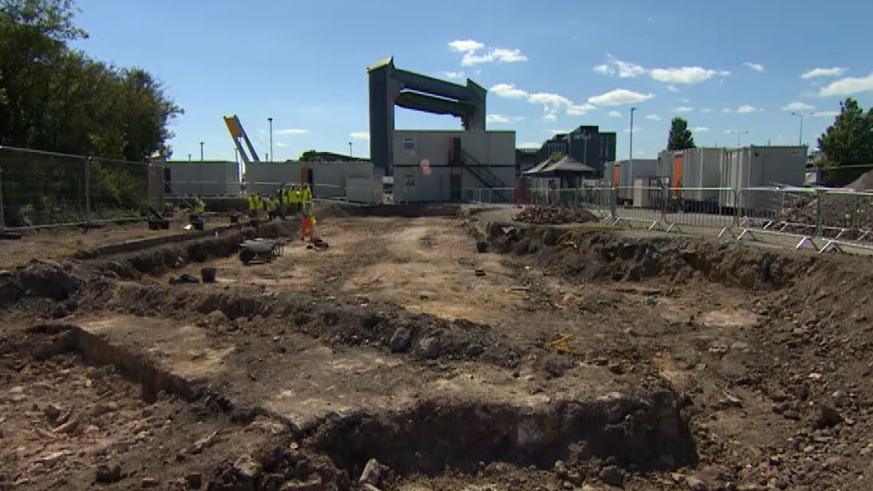
- Published28 February
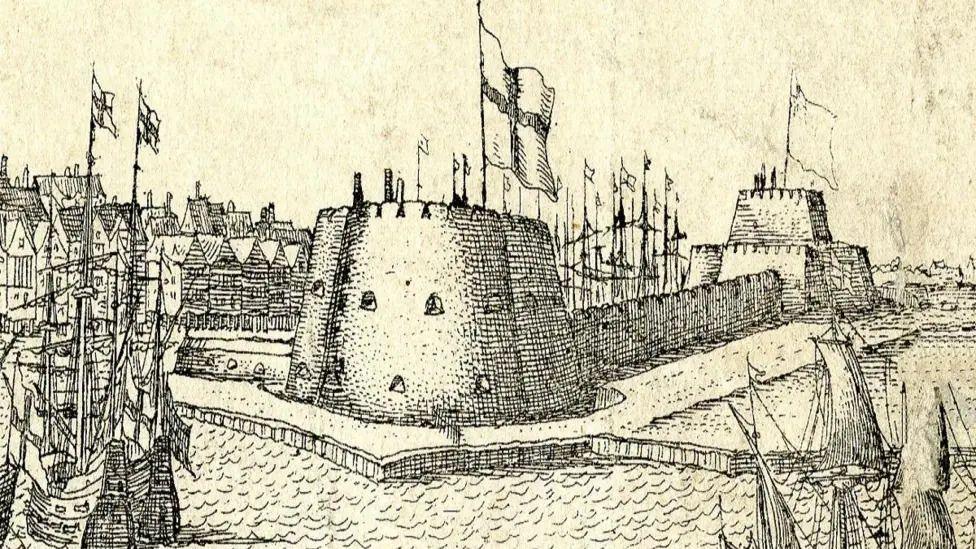
- Published27 December 2017
